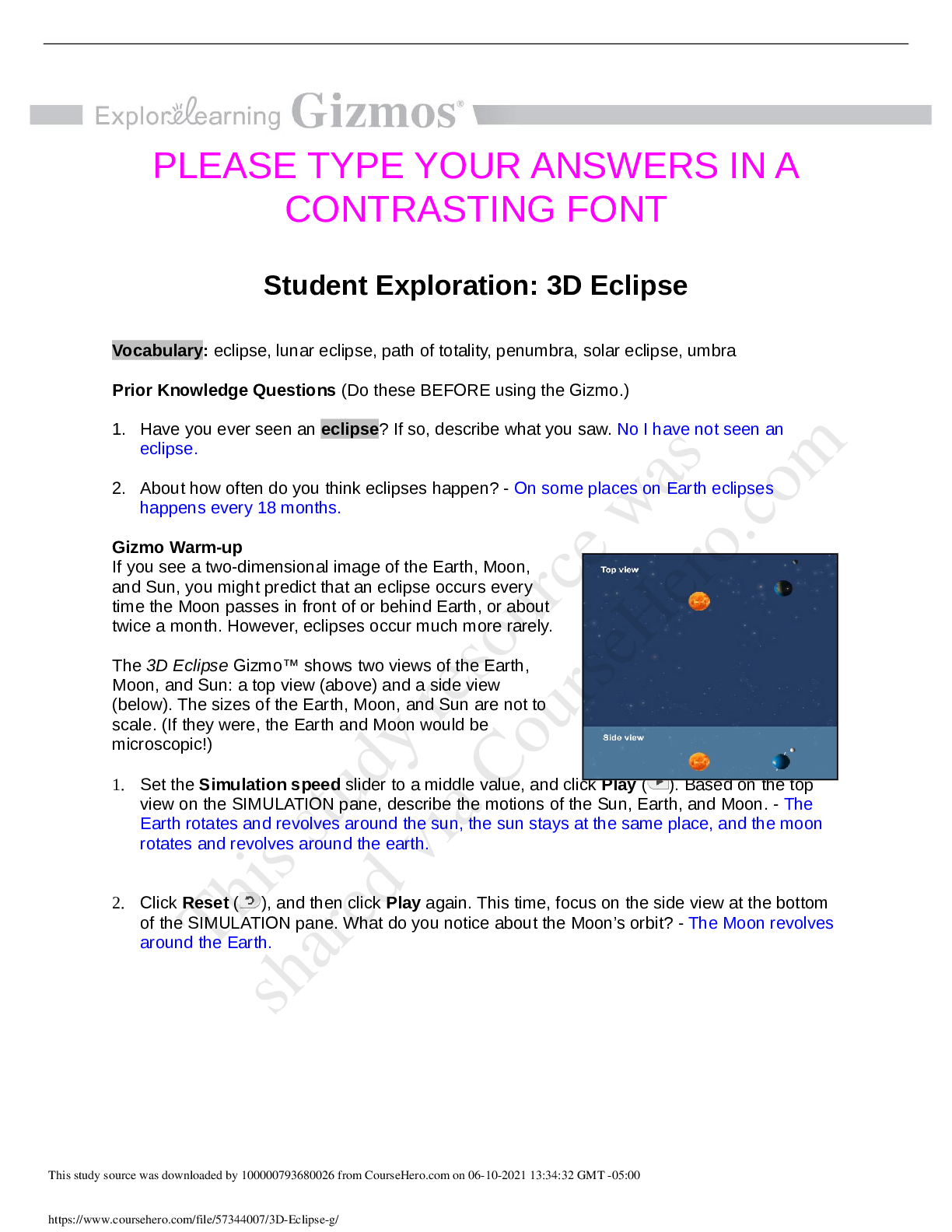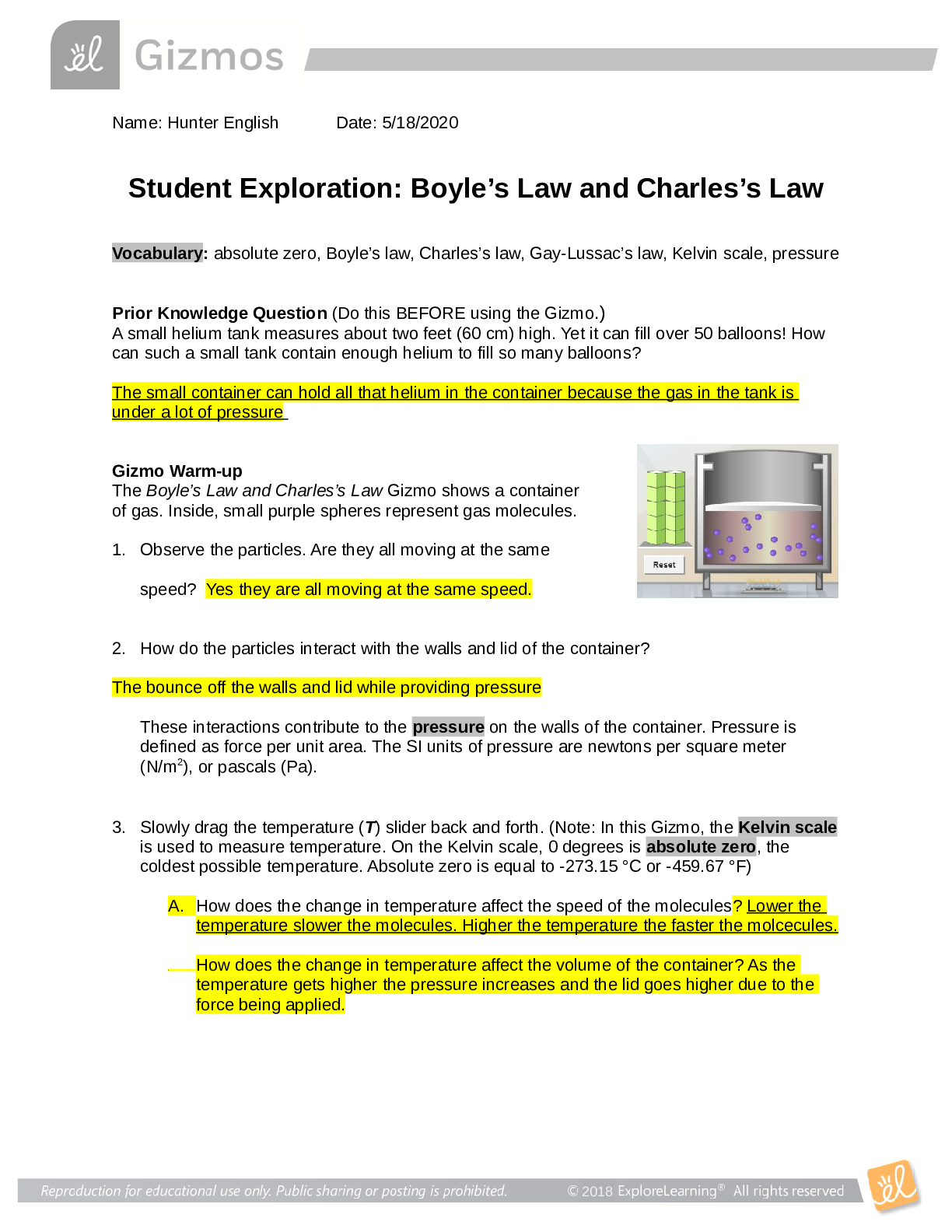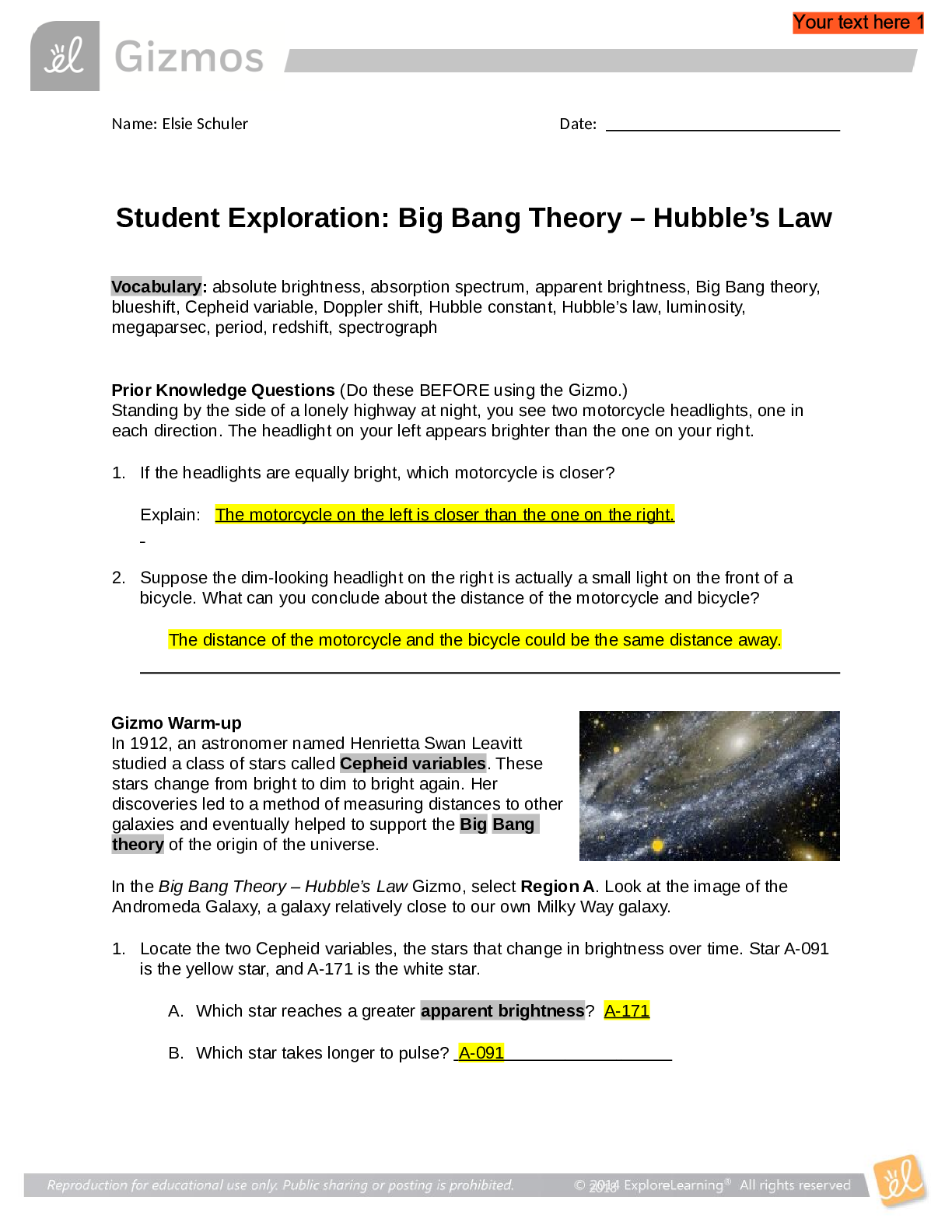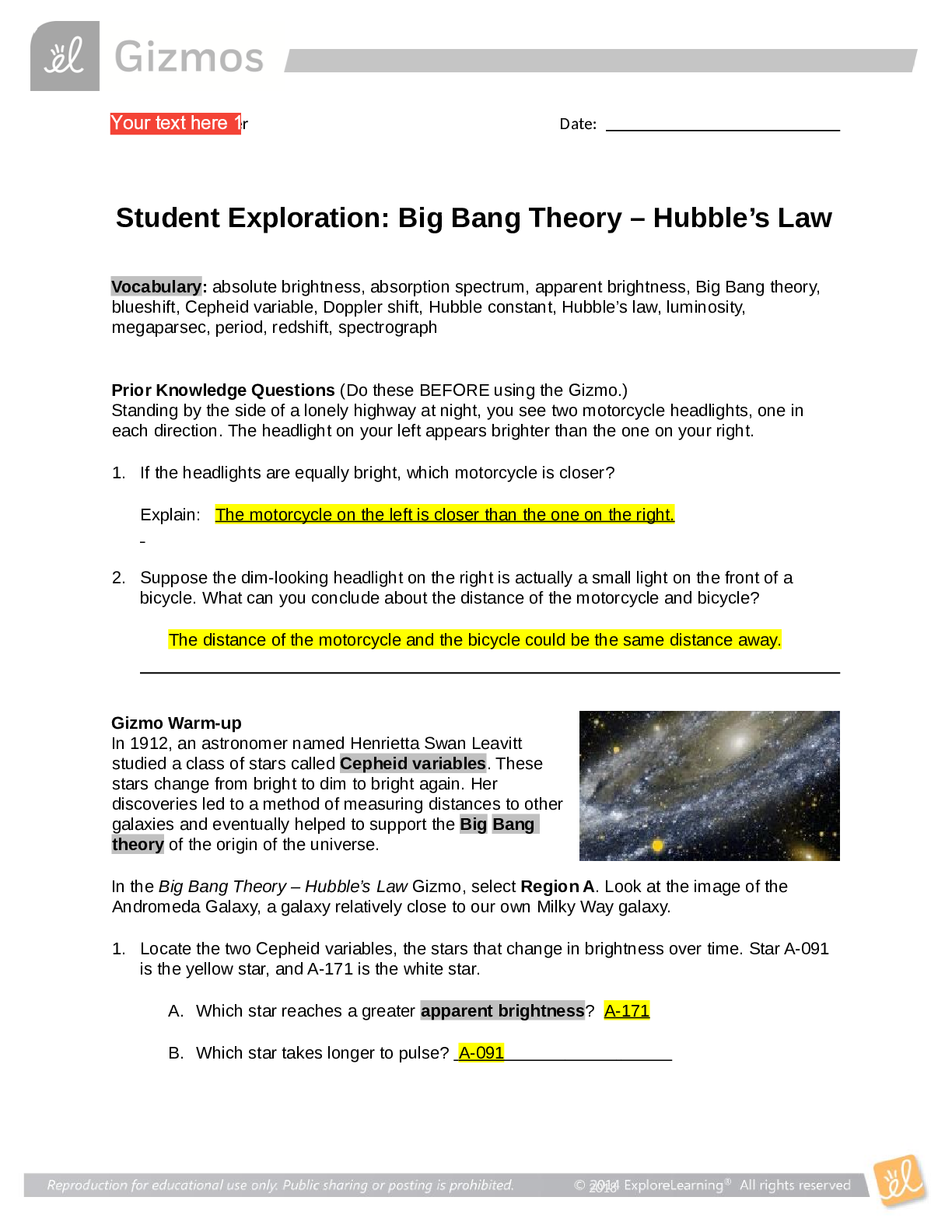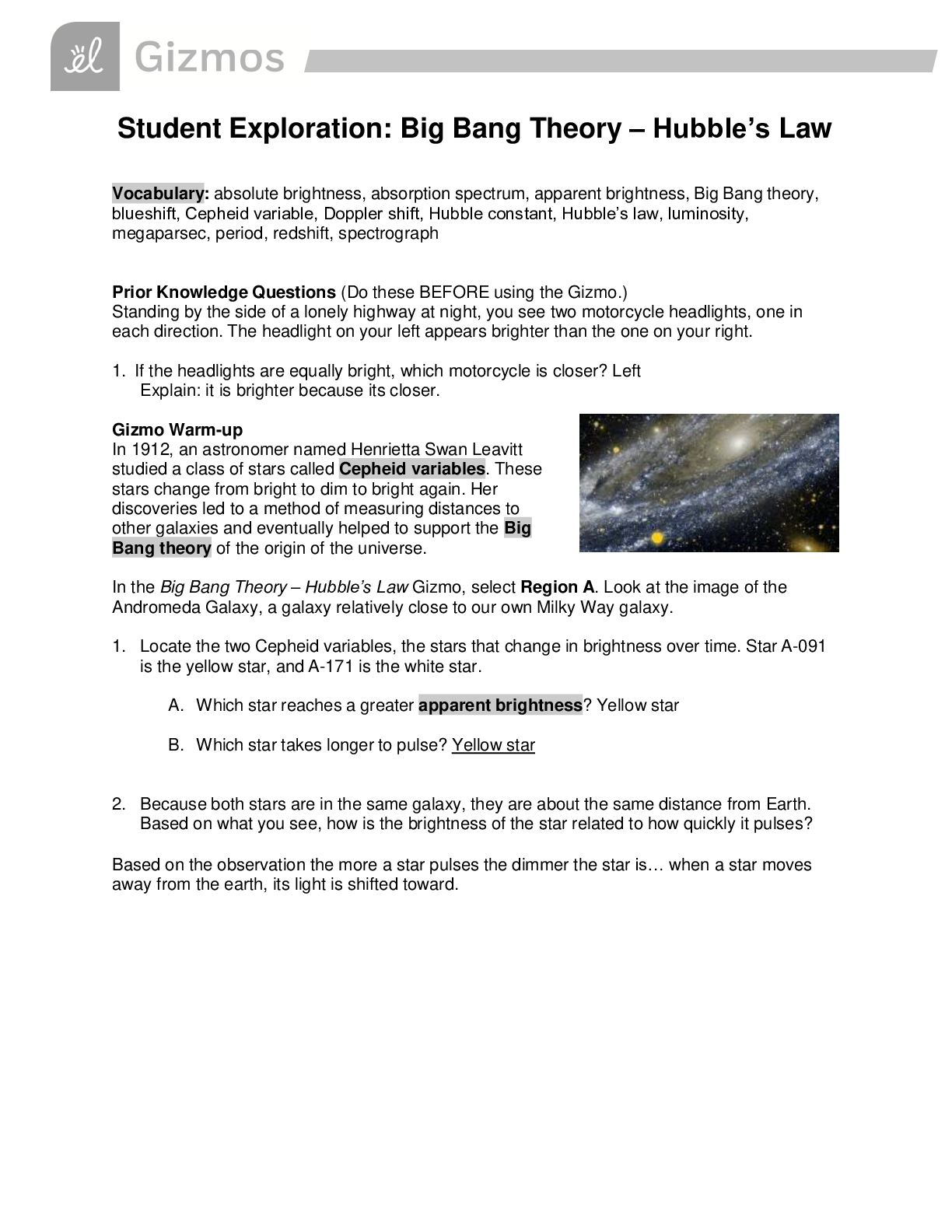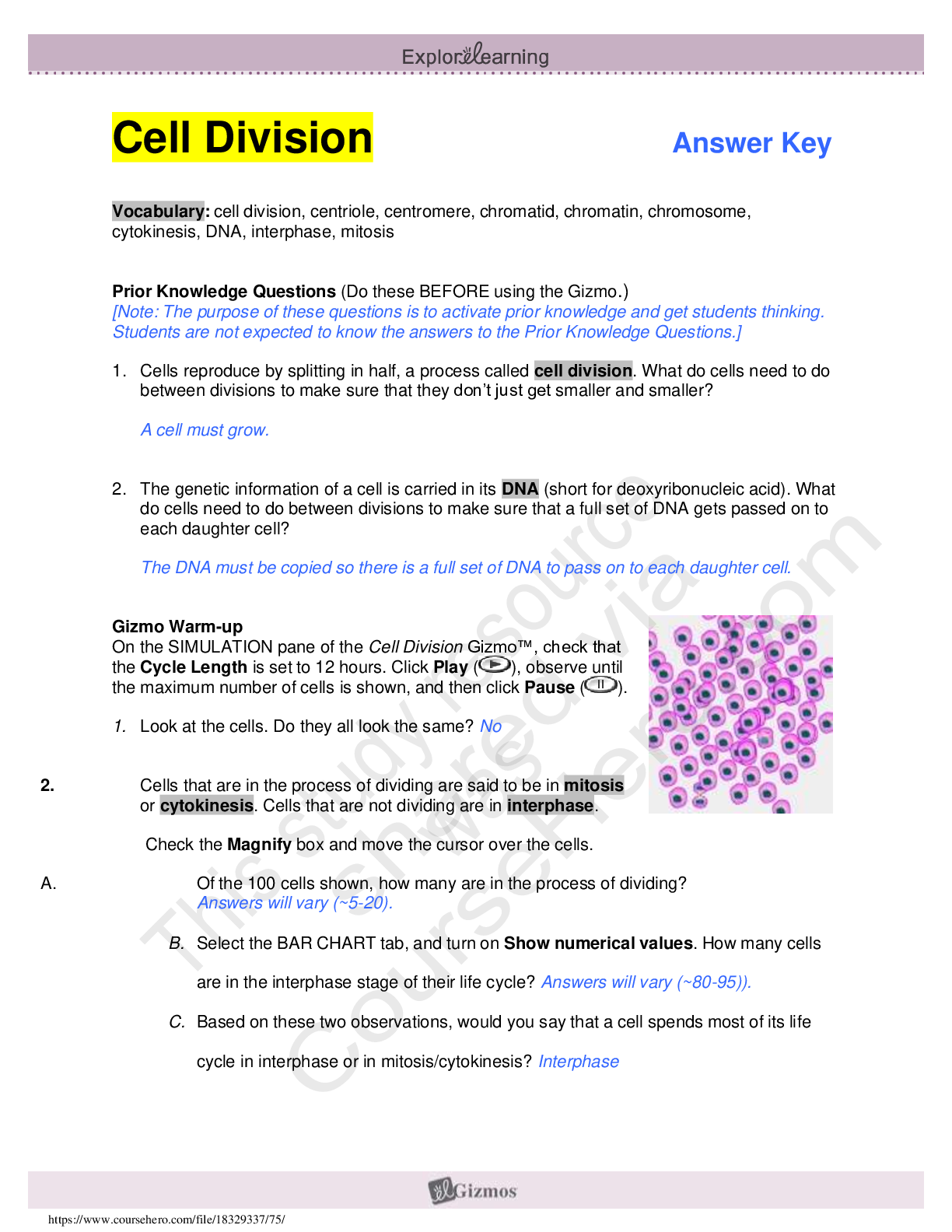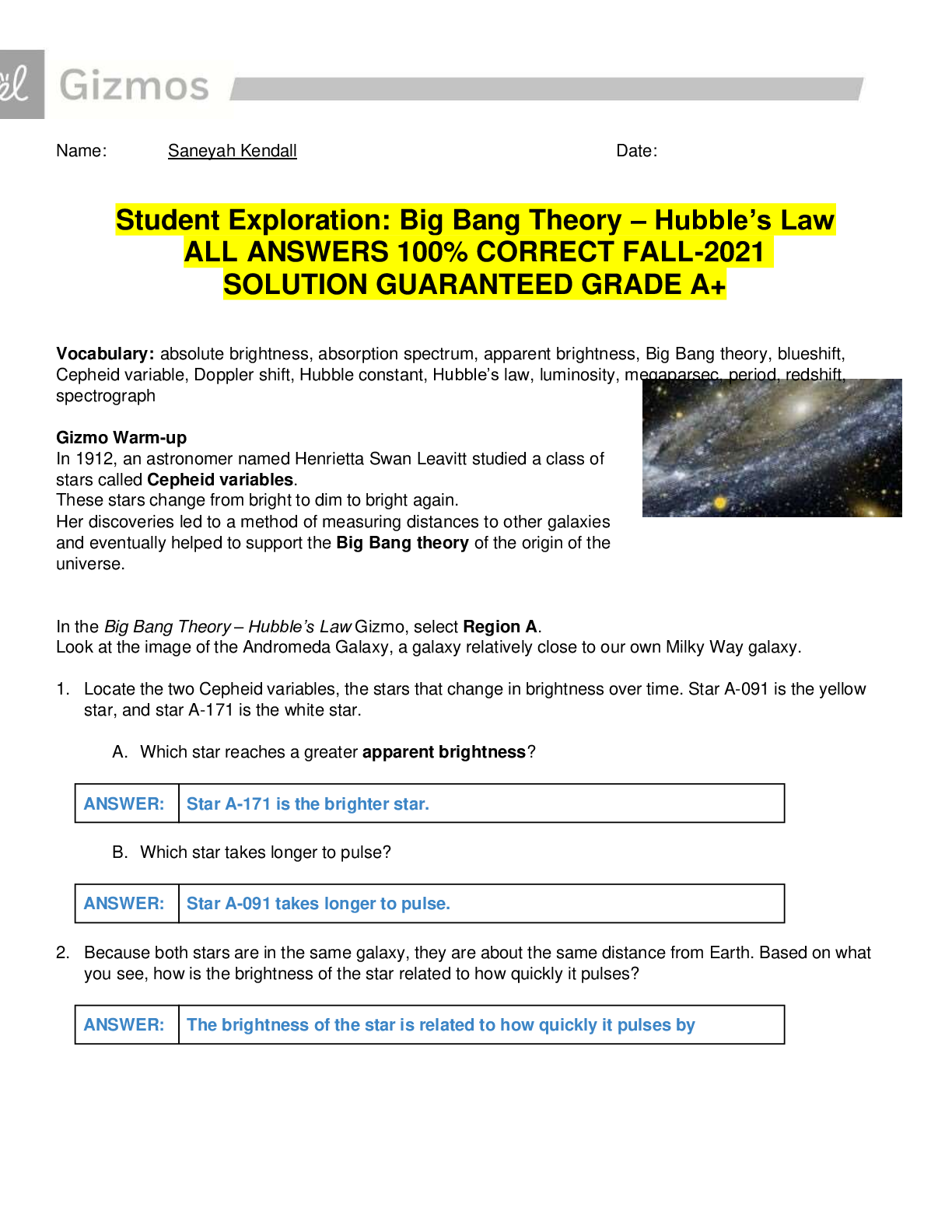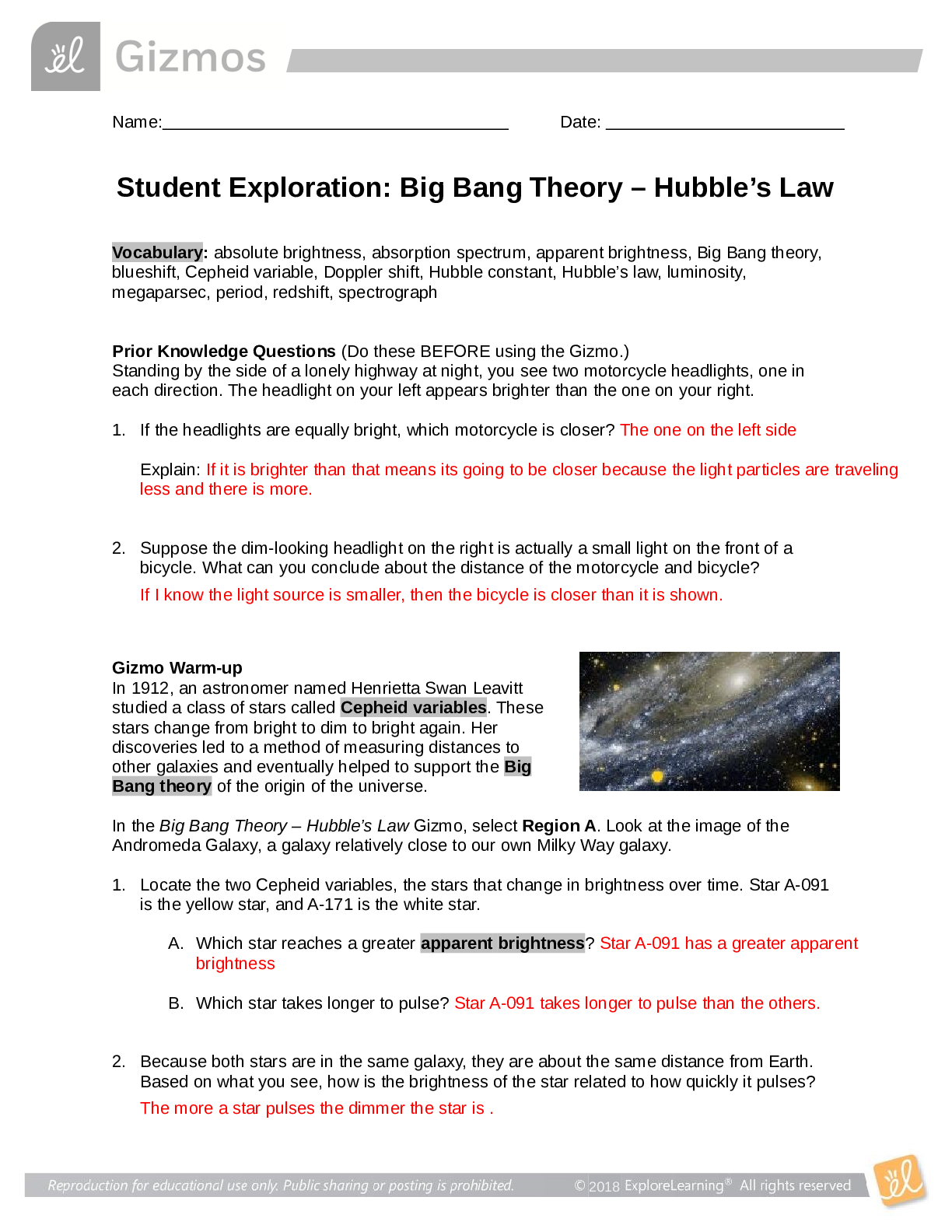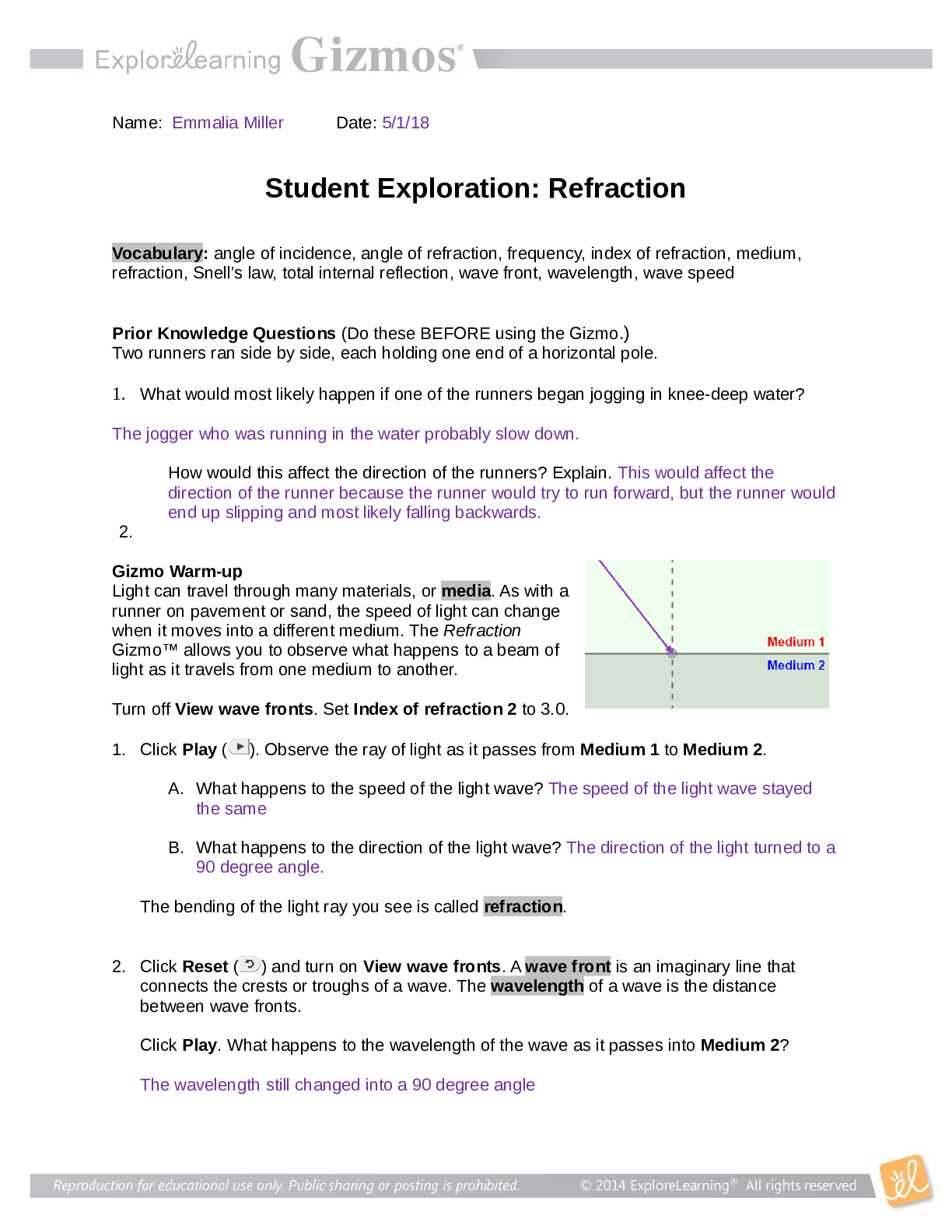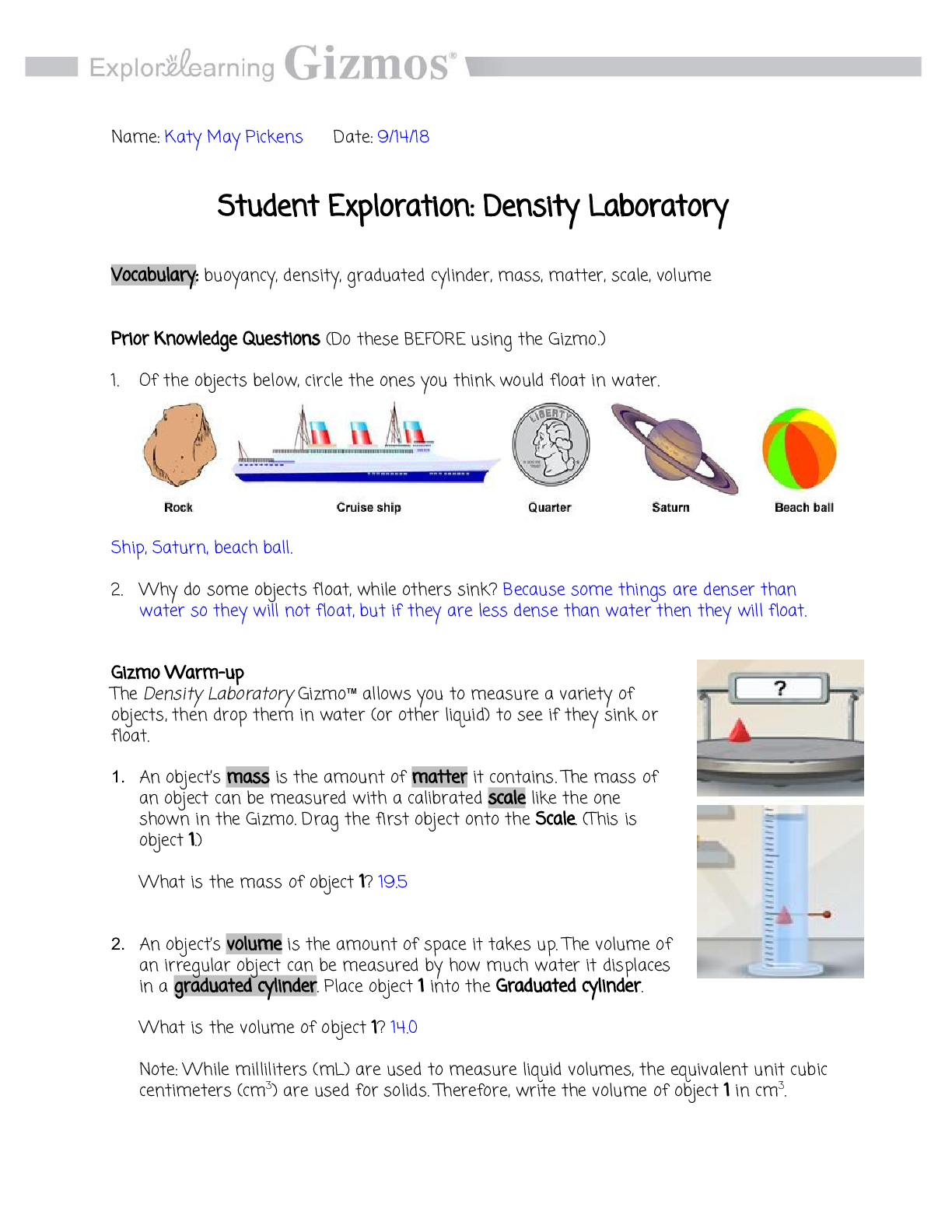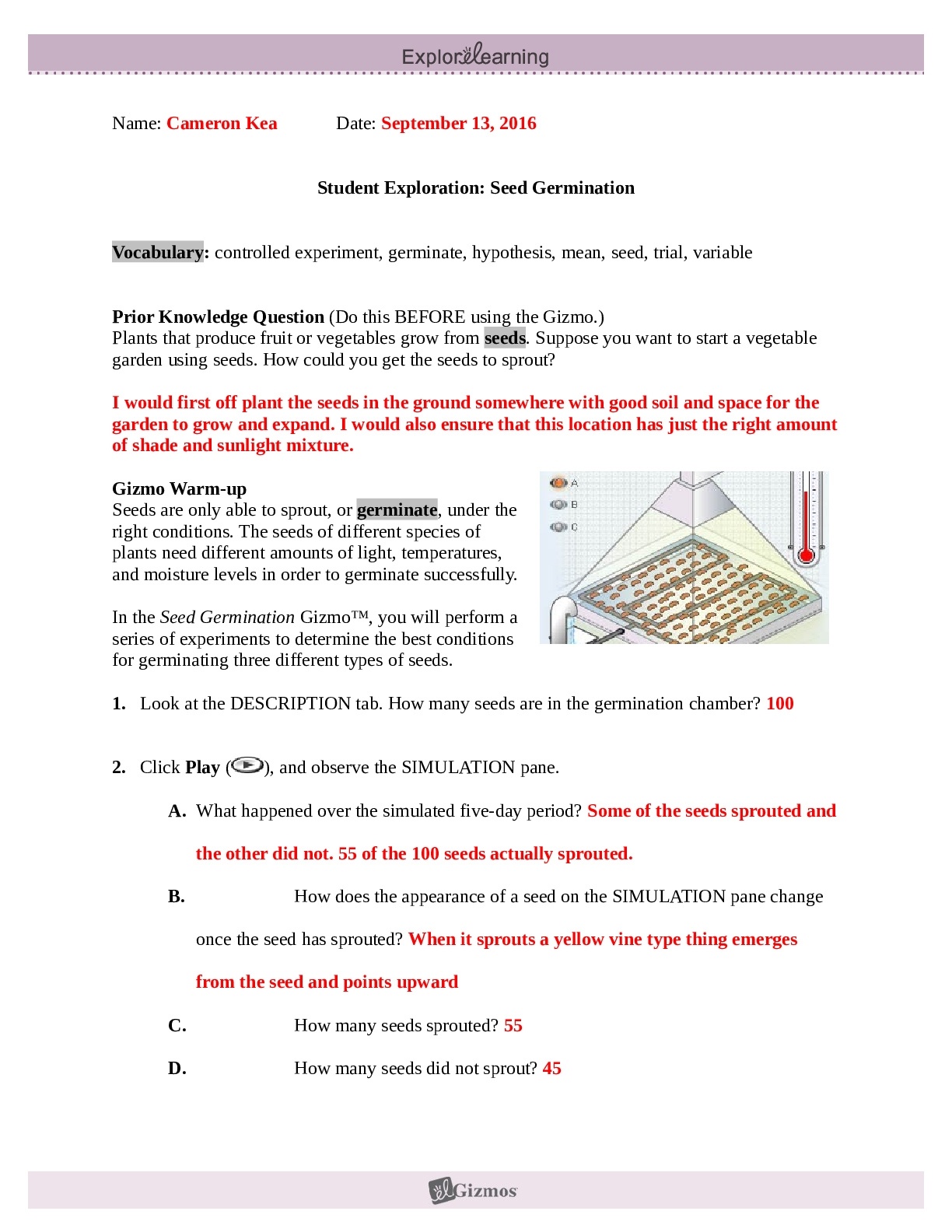Student Exploration: 3D Eclipse Gizmo
Document Content and Description Below
Name: Emmalia Miller Date: 1/28/18 Student Exploration: 3D Eclipse Vocabulary: eclipse, lunar eclipse, path of totality, penumbra, solar eclipse, umbra Prior Knowledge Questions (Do these... BEFORE using the Gizmo.) 1. Have you ever seen an? If so, describe what you saw. I 2. About how often do you think eclipses happen? Gizmo Warm-up If you see a two-dimensional image of the Earth, Moon, and Sun, you might predict that an eclipse occurs every time the Moon passes in front of or behind Earth, or about twice a month. However, eclipses occur much more rarely. The 3D Eclipse Gizmo™ shows two views of the Earth, Moon, and Sun: a top view (above) and a side view (below). The sizes of the Earth, Moon, and Sun are not to scale. (If they were, the Earth and Moon would be microscopic!) 1. Set the Simulation speed slider to a middle value, and click Play ( ). Based on the top view on the SIMULATION pane, describe the motions of the Sun, Earth, and Moon. 2. Click Reset ( ), and then click Play again. This time, focus on the side view at the bottom of the SIMULATION pane. What do you notice about the Moon’s orbit? Introduction: There are two parts to the Moon’s shadow. The umbra is the central, darkest portion of the shadow. An observer standing in the umbra cannot see the Sun. The penumbra surrounds the umbra. An observer in the penumbra sees part of the Sun. Only the umbra is shown in the 3D Eclipse Gizmo. Question: What controls whether a solar eclipse will occur? 1. Observe: Click Play and then Pause ( ) when the Moon is directly between the Earth and Sun. (If you go too far, you can click the Back button to step back.) A. What do you notice about the Moon’s shadow? The moon’s shadow is facing the earth. B. Under Views, select Earth. What do you see? The earth is bright and lit up except for a small crescent. Any person standing in the Moon’s shadow will experience a solar eclipse. During a total solar eclipse, the entire disk of the Sun is blocked by the Moon. 2. Observe: Set the Simulation speed to a lower setting and click the Back button until just before the Moon’s shadow crosses Earth’s surface. Click Play and observe. A. What do you notice? B. The path the Moon’s umbra traces across Earth’s surface is called the path of totality. What would you see if you were standing in the path of totality? 3. Record: Click Reset. Set the speed to a higher setting and click Play. Use the Gizmo to determine the dates of the first six solar eclipses of the year. Record these dates below. Do you think solar eclipses really happen this often? Explain ......................................................................continued......................................................................................... [Show More]
Last updated: 1 year ago
Preview 1 out of 6 pages
Instant download

Instant download
Reviews( 0 )
Document information
Connected school, study & course
About the document
Uploaded On
Jun 10, 2021
Number of pages
6
Written in
Additional information
This document has been written for:
Uploaded
Jun 10, 2021
Downloads
0
Views
103

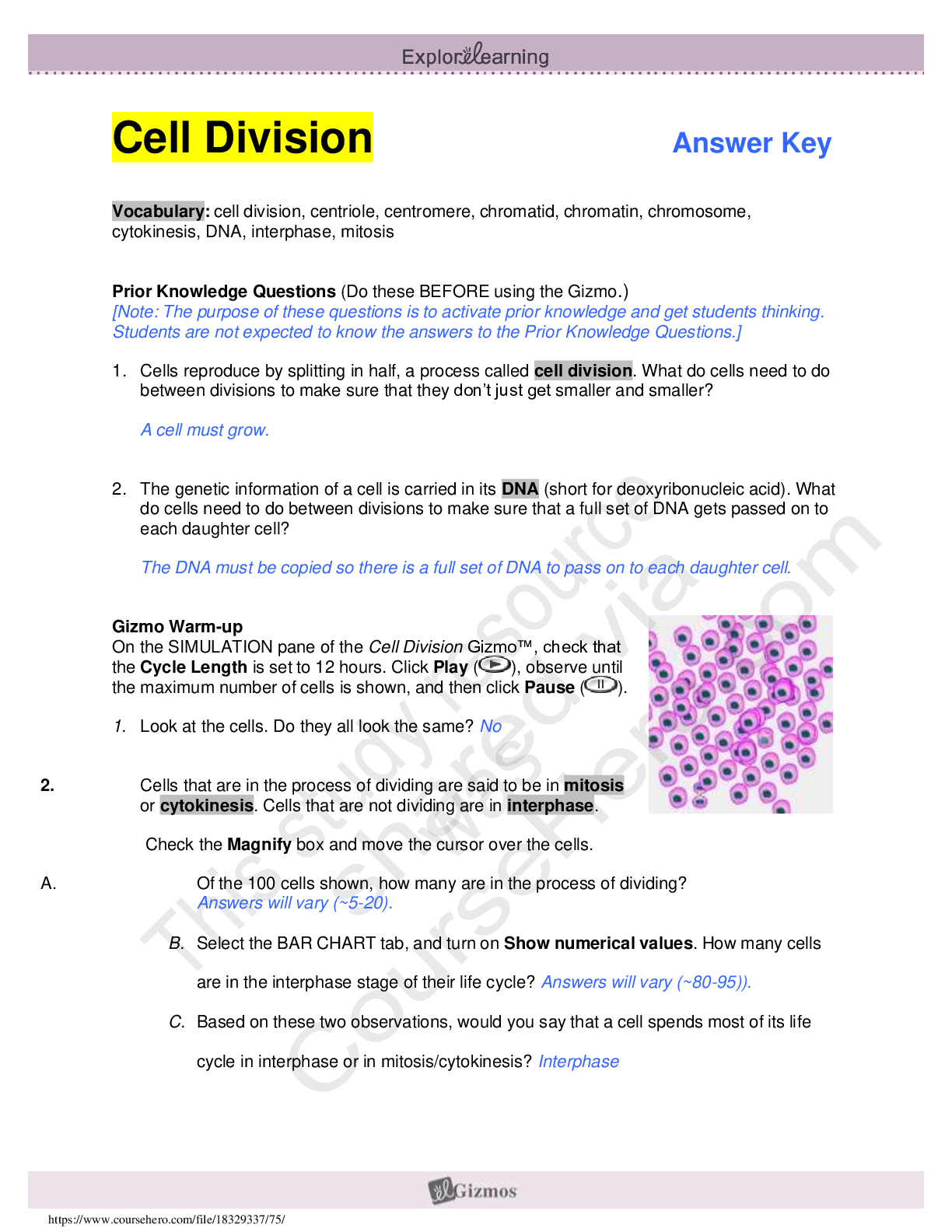
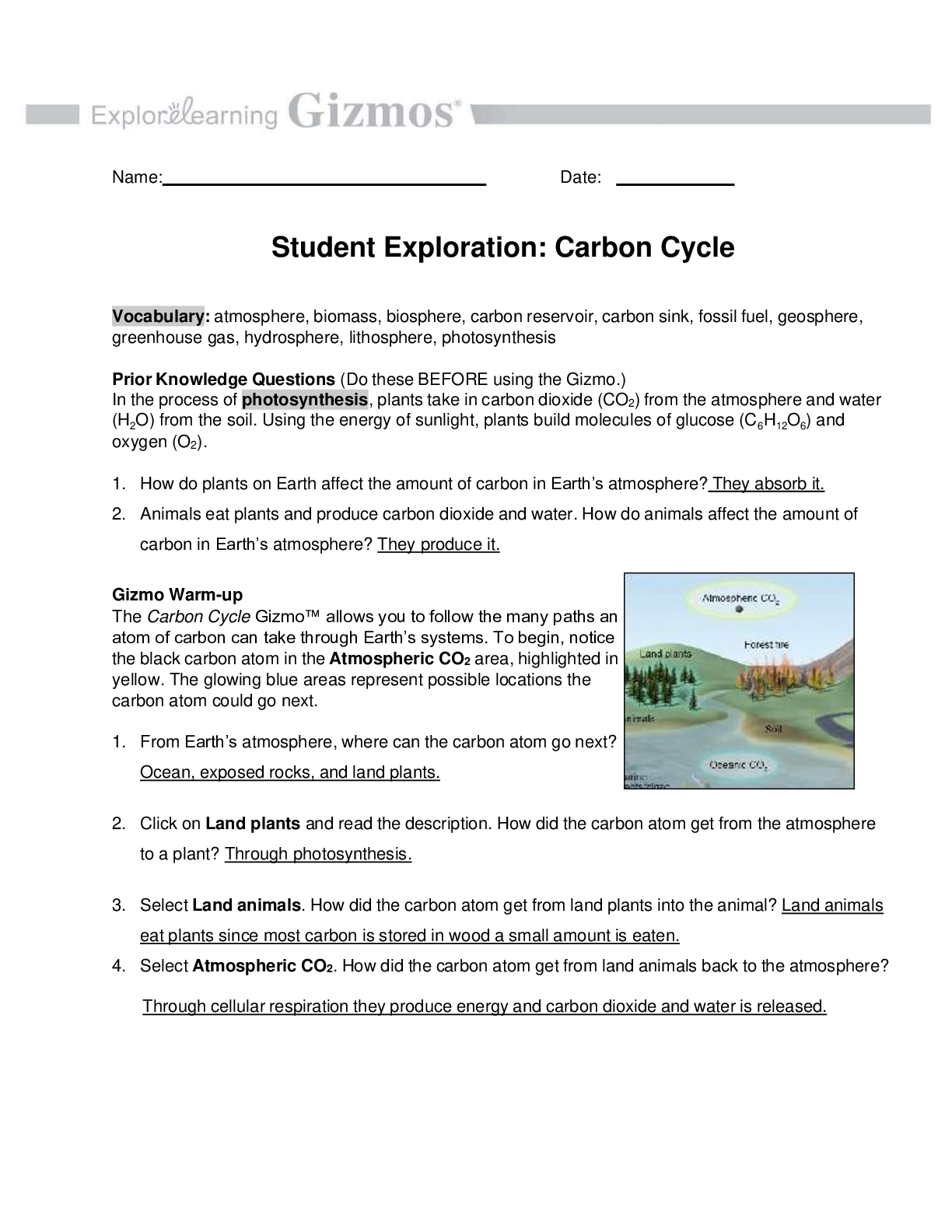

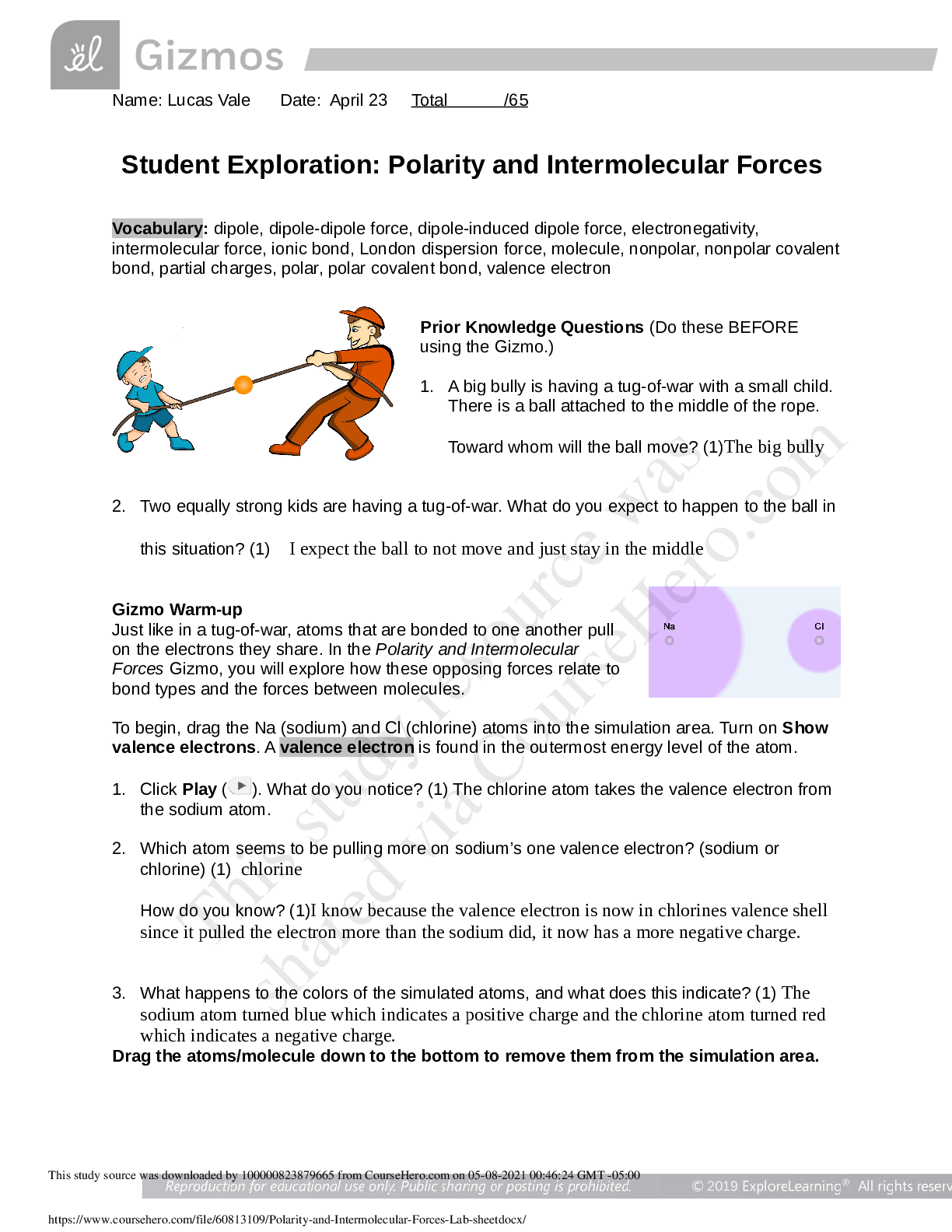

.png)
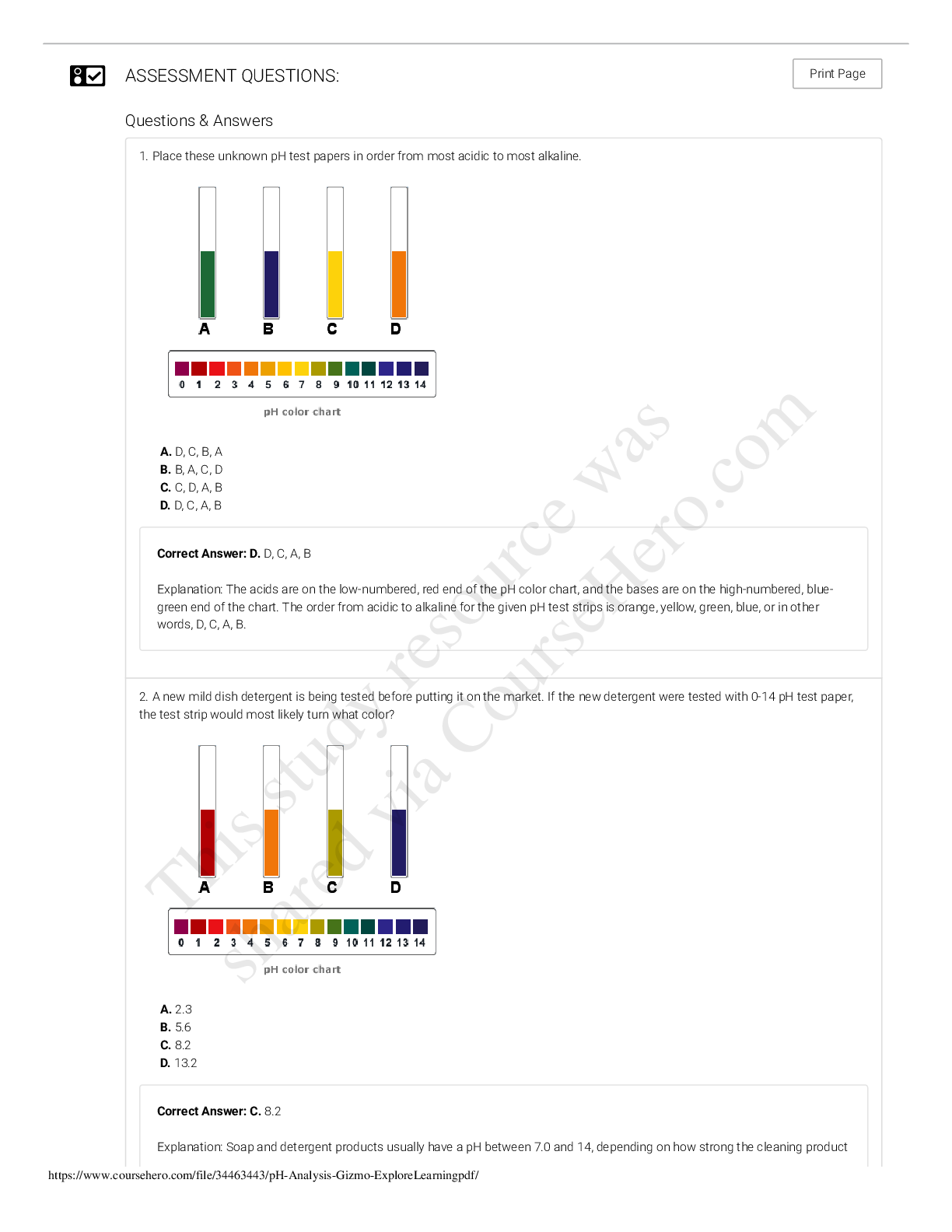
.png)

